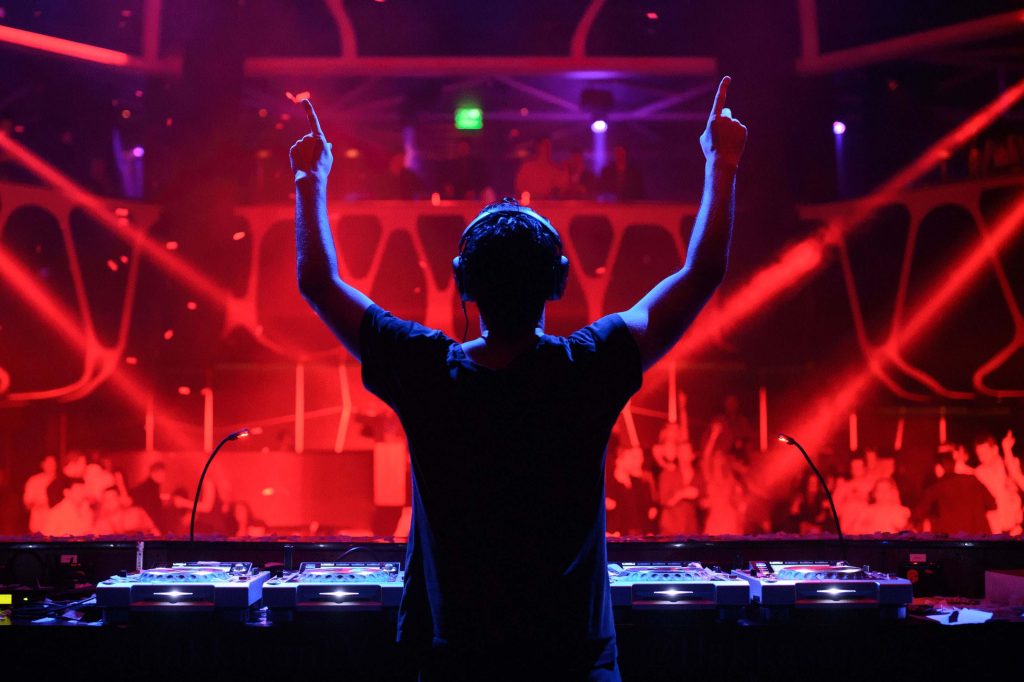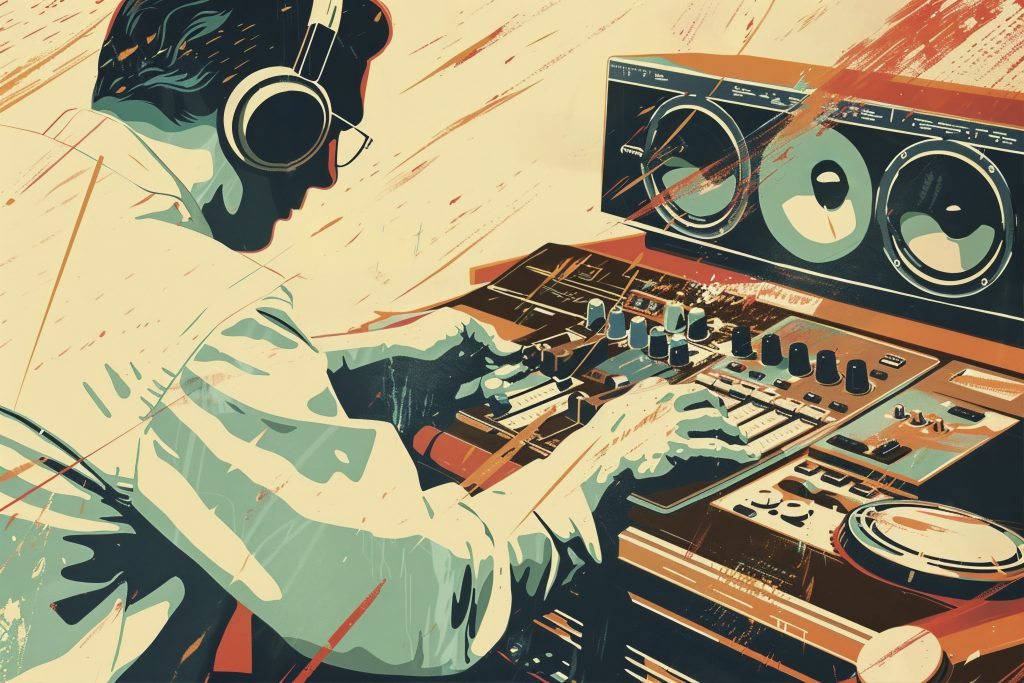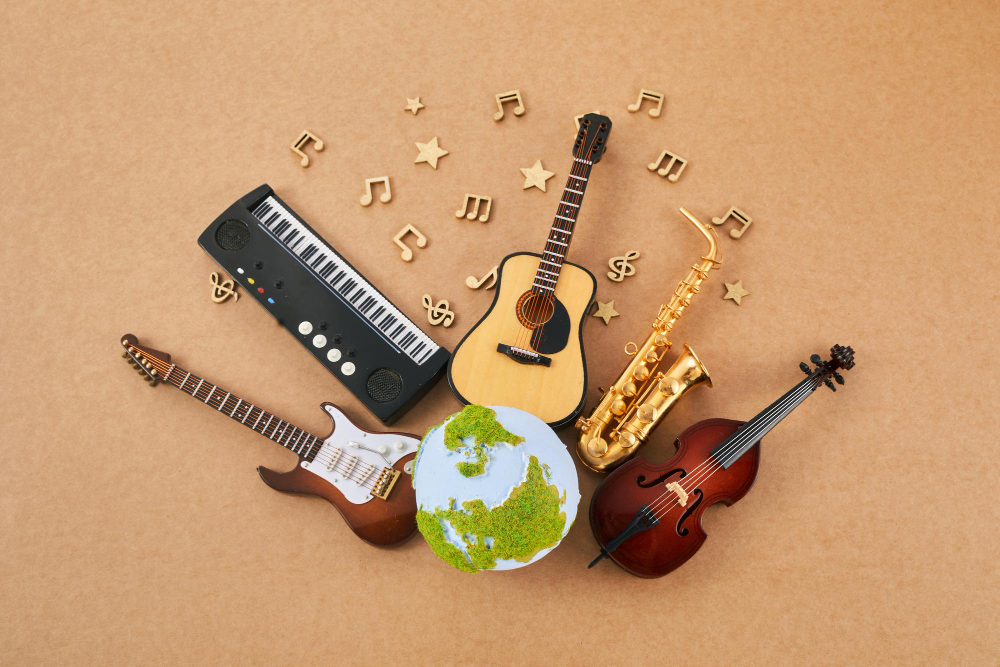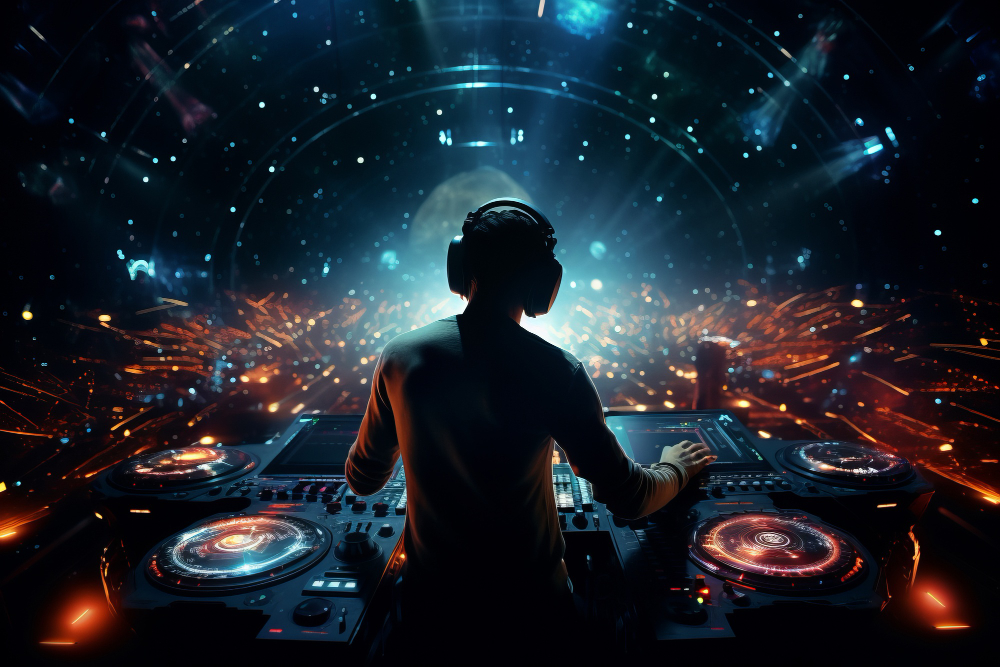The Evolution of Hip-Hop: From Old School to Modern Beats
Hip-hop is more than just music, it’s a movement. Born from the streets, it has grown into a global phenomenon. From the rhythmic rhymes of old-school pioneers to the complex, layered beats of today, hip-hop has constantly evolved, staying fresh and relevant through the decades.
In this blog, we’ll explore the rich journey of hip-hop music, understand how its sound and message have changed, and how modern music classes and music production courses are shaping the next generation of hip-hop artists. Whether you’re an aspiring artist or simply a fan, this journey through hip-hop’s history is one worth taking.
The Birth of Hip-Hop: 1970s Bronx
During the early 1970s hip-hop emerged first in the Bronx area of New York City. The combination of music and dance emerged from Bronx residents who belonged to the African-American and Latino communities for expression and community events.
Local DJs such as Kool Herc, Grandmaster Flash, and Afrika Bambaataa used their equipment at Bronx block parties to begin their experimental music work. The DJs separated drum beats from funk and soul records to sustain the musical rhythm. Hip-hop music got its foundation from the approach DJs used during the early 1970s.
The Four Pillars of Hip-Hop
Do you want free career counseling?
Ignite Your Ambitions- Seize the Opportunity for a Free Career Counseling Session.
- 30+ Years in Education
- 250+ Faculties
- 30K+ Alumni Network
- 10th in World Ranking
- 1000+ Celebrity
- 120+ Countries Students Enrolled
In its early form, hip-hop wasn’t just music. It included:
- MCing (Rapping) – Spoken rhymes over beats.
- DJing – Creating music by manipulating records.
- Breakdancing – A physical expression of rhythm.
- Graffiti Art – Visual storytelling on city walls.
These elements combined into a vibrant street culture that was raw, creative, and real.
The Golden Age of Hip-Hop: 1980s to Early 1990s
The period from 1980 to the beginning of the 1990s marks the time during which Hip-Hop found its Golden Age. During this period the music genre exploded through both its artistry evolution and wider distribution. Artists started publishing album releases instead of single tracks and their lyrics took on deeper social meaning.
Book Now →
Key Artists of the Era
- Run-D.M.C. brought hip-hop into the mainstream.
- Public Enemy used rap as a tool for political activism.
- N.W.A. introduced gangsta rap, reflecting life on the streets of Compton.
- Rakim changed rap with his internal rhymes and smooth flow.
These artists used their music to comment on real issues—racism, poverty, police brutality—and gave a voice to the unheard.
The Rise of Sampling
The technique of sampling started to dominate in future hip-hop production. Producers extracted brief musical segments from outdated funk jazz and soul compositions to build fresh musical creations. The emergence of music production as an independent talent started to become evident during this period.
Read Also: Why Music Classes Are Essential for Aspiring Musicians
Do you want free career counseling?
Ignite Your Ambitions- Seize the Opportunity for a Free Career Counseling Session.Students who now take a music production course or attend music production classes often study these classic techniques to understand how hip-hop beats were crafted in the past.
The Diversification of Hip-Hop: Mid-1990s to 2000s
By the mid-1990s, hip-hop was no longer limited to the East or West Coast of the United States. It had grown nationwide—and even worldwide.
Regional Styles Emerge
- East Coast (New York): Known for lyricism and storytelling (e.g., Nas, Notorious B.I.G.).
- West Coast (California): Funk-inspired beats and laid-back delivery (e.g., Tupac, Dr. Dre, Snoop Dogg).
- South (Atlanta, Houston): Rise of crunk, trap, and chopped-and-screwed music (e.g., OutKast, Lil Wayne).
- Midwest: Fast-paced flows and innovation (e.g., Eminem, Kanye West).
Each region brought its flavor, and the genre became richer as a result.
The Role of Technology
With the rise of computers and software, beat-making became more accessible. You didn’t need expensive studio equipment to produce a track. This led to the birth of bedroom producers—young musicians creating beats at home using digital audio workstations (DAWs).
Many of today’s music engineering courses teach students how to use tools like FL Studio, Ableton Live, and Logic Pro, which allow even beginners to start producing hip-hop tracks quickly.
The Modern Era of Hip-Hop: 2010s to Present
Today, hip-hop is the most popular music genre in the world. It dominates the charts, influences fashion, slang, and even politics. But what does modern hip-hop sound like?
The Sound of Today
Modern hip-hop is more melodic, experimental, and diverse than ever. The use of Auto-Tune, trap beats, and genre-blending has changed how we define rap music. Artists freely mix hip-hop with pop, R&B, EDM, and even rock.
Key figures of modern hip-hop include:
- Kendrick Lamar – Known for storytelling, social commentary, and complex production.
- Drake – Master of melodic rap and emotional storytelling.
- Travis Scott – Popularized atmospheric, psychedelic trap beats.
- Cardi B and Megan Thee Stallion – Leading voices in modern female rap.

Read Also: India’s Top 10 Music Composers of 2025 You Should Know
Evolution of Beat Making
Today’s hip-hop beats are created using advanced tools, with an emphasis on 808s, hi-hats, layered synths, and smooth transitions. Modern music production classes focus on these trends, helping students understand how today’s sounds are structured and mixed.
Aspiring producers often enroll in a course in music production or sound engineering courses to gain hands-on experience with these tools.
The Impact of Social Media and Streaming
One of the biggest changes in modern hip-hop has been how the music reaches people.
YouTube and SoundCloud Rappers
In the 2010s, platforms like SoundCloud, YouTube, and Other gave rise to a new generation of hip-hop artists. Without any label support, these artists built massive fan bases:
- XXXTentacion
- Lil Uzi Vert
- Juice WRLD
- Post Malone
This shift reduced the gap between artists and listeners. Anyone with talent and access to a mic could release music and get noticed.
Read Also: Evolution of Music Composition: From Classical to Modern Techniques
Music schools and music academies now often include modules on digital distribution and social media marketing, so students understand how to navigate the modern music industry.
Hip-Hop’s Influence Beyond Music
Hip-hop isn’t just a genre—it’s a lifestyle. Over the decades, its influence has extended into:
1. Fashion
From Adidas tracksuits in the ’80s to today’s streetwear brands, hip-hop has always set fashion trends.
2. Language
Slang like “dope,” “lit,” and “fam” became part of everyday language thanks to hip-hop.
3. Social Movements
Hip-hop has often addressed issues like racial injustice, police brutality, and inequality. Songs like Kendrick Lamar’s “Alright” or Childish Gambino’s “This Is America” sparked national conversations.
4. Film and TV
Movies like 8 Mile, Straight Outta Compton, and documentaries on Netflix showcase hip-hop’s rise and power.
For students in music school, understanding hip-hop’s cultural context is as important as learning production techniques.
The Role of Education in Hip-Hop’s Future
With hip-hop now being taught in universities and music schools around the world, formal education has a strong role in its future. Earlier, hip-hop was learned on the streets. Today, students are enrolling in music engineering courses and sound engineering classes to master the technical side of the genre.
What Do These Courses Offer?
- Music Production Courses: Teach beat making, mixing, mastering, and arrangement.
- Sound Engineering Courses: Cover recording techniques, acoustics, and audio post-production.
- Music Academies: Offer full programs that include music theory, songwriting, and live performance.
These music production classes not only sharpen skills but also build connections in the industry.
Read Also: How Technology Enhances Music Composition: From MIDI to Masterpiece?
If you’re passionate about creating music, a course in music production or joining a music school could be your first step toward a rewarding career.
Women in Hip-Hop: Breaking the Mold
While early hip-hop was male-dominated, the scene has changed. Female rappers and producers are now taking center stage.
Notable Names
- Nicki Minaj – Opened the door for many modern female rappers.
- Missy Elliott – A producer and rapper with a unique sound.
- Doja Cat, Saweetie, Rapsody – Artists who are reshaping the narrative.
Music schools today are encouraging gender diversity, with many female students enrolling in music engineering courses and excelling in technical roles as well.
Hip-Hop Around the World
Hip-hop is no longer confined to the streets of New York or the clubs of Los Angeles. Over the years, it has evolved into a powerful global movement. From Korean rap (K-hip hop) to French, African, and Indian hip-hop, the genre has adapted to diverse languages, cultures, and social contexts—while staying true to its roots of storytelling, rhythm, and rebellion.
Indian Hip-Hop Scene
In India, the hip-hop movement has taken on a distinct identity. The rise of homegrown artists like DIVINE, Naezy, Emiway Bantai, Prabh Deep, KR$NA, and Seedhe Maut has brought raw Indian stories to the global stage. These artists rap in Hindi, Punjabi, Marathi, Tamil, and other regional languages, giving voice to the everyday struggles and dreams of Indian youth.
The film Gully Boy (2019), inspired by the lives of DIVINE and Naezy, served as a turning point. It introduced mainstream audiences to the underground rap culture thriving in cities like Mumbai and Delhi. It also highlighted how hip-hop could be a powerful tool for self-expression in a country with such diverse socio-economic backgrounds.
Indian hip-hop now isn’t just about lyrics—it’s about sound quality, production values, and live performances. Many young people who dream of becoming rappers, beatmakers, or producers are enrolling in music production courses, music school programs, and sound engineering courses to gain the technical skills required. Whether it’s learning how to mix and master tracks or understanding the nuances of sound design, today’s aspiring artists are investing in their craft.
Read Also: Why Music Theory is Essential for Every Aspiring Musician
Thanks to social media platforms, streaming services, and affordable recording equipment, independent Indian hip-hop has flourished. From slum streets to big stages, hip-hop in India has become a symbol of hope, identity, and resistance.
What’s Next for Hip-Hop?
The future of hip-hop is exciting. As technology grows, artists can experiment more than ever. AI-generated beats, virtual reality concerts, and interactive albums could soon become common.
Yet, even with all these changes, the heart of hip-hop remains the same: storytelling, rhythm, and raw emotion.
Whether you’re an aspiring rapper, producer, or DJ, the tools to learn and grow are more accessible than ever before.
Final Thoughts
Hip-hop has come a long way—from block parties in the Bronx to the global stage. It continues to inspire, evolve, and influence every corner of the music world. If you’re dreaming of being a part of this movement, don’t just listen to hip-hop—create it, study it, and live it.
The world needs more voices, more beats, and more stories. And your journey can begin with the right education and guidance.
AAFT, a leading name in creative education, offers professional courses in music production and sound engineering to help students build a successful career in the music industry.

AAFT has been providing the world with limitless creativity and expression since 1993! Through a dynamic and industry-driven curriculum, AAFT provides engaging and captivating articles to persuasive blogs and empowers its readers to explore diverse avenues of creative media education-related content.






